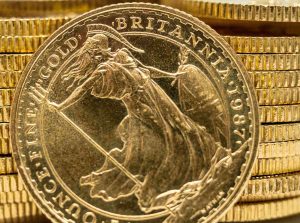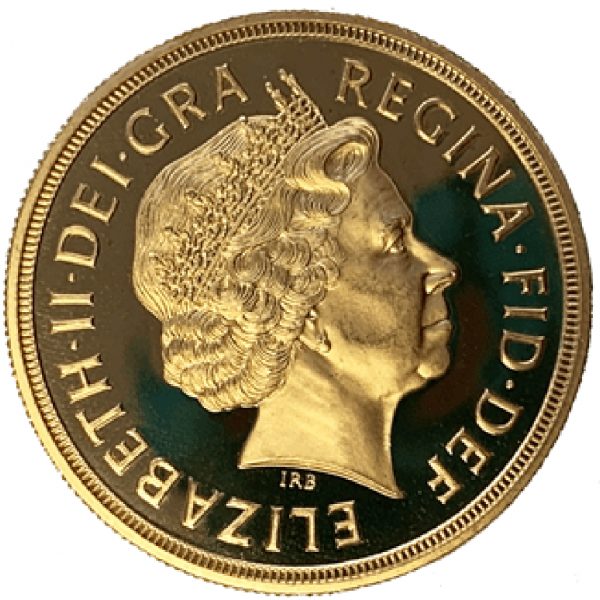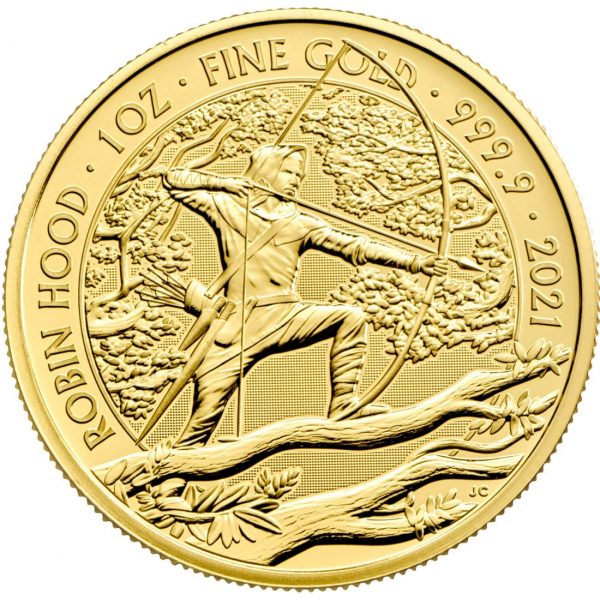How Many Types of Gold Coins Are There?
21/11/2019Daniel Fisher
Free & fully insured UK Delivery. Learn more
Secure & flexible payments. Learn more

Buyback Guarantee Learn more
Navigating the world of gold coins can be overwhelming, given there are so many different types of gold coins to choose from.
This guide will help you understand the differences between gold coin types and choose the best option for your investment needs.
Gold coins have long been a popular choice among investors due to their flexibility.
While gold bars or ingots are mainly sought after for their lower production costs, coins attract both collectors and investors, offering divisibility to any investment portfolio.
Gold coins provide multiple opportunities to sell at various price points, allowing you to sell the exact amount you need, unlike gold bars which offer only one selling opportunity.
Gold coins have been around for thousands of years, creating a vast and diverse market to explore.
Gold coins have been valued for their durability, malleability, and rarity for thousands of years, serving as a universal form of currency.
The first gold coins were minted in the Kingdom of Lydia (present-day Turkey) around 600 BCE, made from electrum, a natural gold and silver alloy.
As coinage spread, civilizations minted gold coins featuring gods, goddesses, or ruling monarchs.
Ancient Rome’s gold aureus coins served as currency, and throughout the Middle Ages, European countries like England, France, and Italy produced gold coins such as the gold florin, noble, and ducat.
In more recent history, gold coins like the British Gold Sovereign, the American Gold Eagle, and the South African Krugerrand have become popular among investors and collectors.
Understanding gold coins’ history and origins provides valuable context for investors, as well as an appreciation for the cultural heritage and artistic craftsmanship they represent.
Bullion coins are minted primarily for investment purposes and carry a value based on their solid gold content and the precious metal's market price.
With high gold content and purity (typically 22 to 24 carats), gold bullion coins such as the Gold Britannia and Gold Sovereign Coins are popular among investors.
These legal tender coins, produced by the Royal Mint, offer tax advantages for British investors. For more information on purchasing gold coins, refer to our specialist guide.
Commemorative coins celebrate specific events, anniversaries, or historical figures and often feature intricate designs and limited mintages.
Valued beyond their gold content for their rarity and historical significance, these coins generally appeal more to collectors than investors.
The Memorial Gold Sovereign, for example, commemorates Queen Elizabeth's reign and King Charles III's new chapter.
Rare or historically significant, numismatic coins are collected for their value beyond precious metal content.
These coins often command higher premiums due to their scarcity and collector demand.
Investing in numismatic gold coins requires a deep understanding of the market and the ability to assess a coin's potential value, making it a more specialised and potentially rewarding investment for experienced collectors.
Use the Portfolio Creator Tool below to get suggestions based on various investment objectives
When browsing gold coin options, investors often come across terms such as ‘1oz’, ‘half’, ‘1/4’, and ‘1/10’. These terms refer to the weight of the gold coins if followed by ‘oz’ or can represent the coin’s fractional size versus the standard size version – a common example being the Half Sovereign.
The best known global 1oz bullion coins all tend to also be produced in identical miniature 1/2oz, 1/4oz and 1/10oz versions nowadays.
This can appeal to collectors wishing to own all sizes of each year’s coin release, or investors seeking smaller denominations of their most familiar gold coins.
It’s important to understand that fractional coins become increasingly expensive per gram, the smaller you go. So a 1oz coin will provide the best ‘value’, while the tiny tenth ounce coins are relatively expensive.
To help you make informed decisions when selecting gold coins for your investment portfolio, let’s break down the meaning behind these terms.
A 1oz gold coin contains one troy ounce of gold, which is equivalent to approximately 31.1 grams.
These coins are generally larger and heavier than their fractional counterparts, and their value is directly tied to the current market price of gold.
Some popular examples of 1oz gold coins include the Gold Britannia, American Gold Eagle, and Canadian Gold Maple Leaf.
As the name suggests, half gold coins contain half a troy ounce of gold, or around 15.55 grams. These coins are smaller and lighter than 1oz coins, making them more affordable for investors who wish to acquire gold at a lower entry point.
Examples of half gold coins include the Half Gold Britannia and the Half American Gold Eagle.
A 1/4 gold coin holds one-fourth of a troy ounce of gold, approximately 7.78 grams. With their smaller size and lower price point, these coins provide a flexible and accessible way for investors to add gold to their portfolios.
The 1/4 Gold Britannia and 1/4 American Gold Eagle are popular examples of quarter-ounce gold coins.
The smallest in this list, 1/10 ounce gold coins contain a tenth of a troy ounce of gold, or roughly 3.11 grams. These coins offer an even more affordable option for investors looking to purchase gold in smaller increments.
While not as common as the larger denominations they do exist, allowing investors even greater types of coin to choose from.
Explore iconic British gold coins, such as the Guinea, Half Guinea, Two Guineas, Five Guineas, and Third Guinea, or modern releases like the Queen’s Beasts Series, Lunar Series, and Colonial Gold Coins.
Each coin represents a unique story, showcasing various chapters in British history and demonstrating the diversity and craftsmanship of gold coinage.

Una and the Lion is a famous coin from the Victorian era
Get the FREE Insider's guide to the best gold coins
As long as a gold coin has a purity of 22 carats or higher, then there is generally no impact on its value or liquidity. That’s because one of the determining factors in qualifying a gold coin as ‘investment grade’ is that its purity is a minimum of 22 carats.
Investment grade coins qualify for VAT-exemption, making them significantly cheaper to buy and easier to sell. Gold coins of less than 22 carats would attract VAT and be far less desirable due to this cost.
Most bullion coins are minted from either 22 to 24 carats, with 24-carat coins boasting 99.99% pure gold.
When exploring gold coin options, it’s vital to assess their gold content, measured in troy ounces or grams. When a gold coin is made from 24-carat gold, this is straightforward. If it weighs 1oz (or 31.103g), then the weight of its gold content is also 1 ounce.
22-carat coins are no less desirable, and this level of purity is used to mint arguably the world’s best known gold coins – Gold Sovereigns and Gold Krugerrands. In fact, 22-carat gold coins tend to scratch less than ‘pure gold’ ones.
However, calculating the ‘pure gold content’ of these coins takes a little more understanding. A gold 22-carat Sovereign weighing 7.988 grams, contains a pure gold content of 7.322 grams. Similarly a gold Krugerrand weighs 33.93g, with a pure gold content of 31.103g.
If you want to calculate the pure gold content of a 22-carat coin, simply multiply the gross weight by 91.7%. Importantly, 22-carat gold coins are bought and sold. Based on their pure gold weight, not that actual weight.
Only the Asian market tends to have a distinct preference for 24-carat coins, so if you intend on selling your coins in that sector, then pure gold coins are the best option.
High liquidity is crucial for investors, as it guarantees that their assets can be easily and quickly converted into cash when needed.
Gold coins, such as the Gold Britannia and Gold Sovereign Coins, are widely recognized and accepted globally, offering robust liquidity for UK investors.
Furthermore, coins with a more extensive market and higher demand are more likely to retain their value, providing an extra layer of security for investors.
Tax benefits play a pivotal role in the decision-making process for UK investors. Gold coins considered legal tender in the UK, like the Gold Britannia and Gold Sovereign Coins, are exempt from Capital Gains Tax (CGT) for UK residents.
Like other Investment Grade gold coins, they’re also free from Value Added Tax (VAT). Essentially this makes them completely tax free when buying and selling.
This makes them an attractive choice for British investors seeking tax-efficient investments. By opting for coins with tax advantages, you can boost your returns and mitigate the impact of taxes on your overall investment performance.
This is increasingly important as the UK CGT-free annual allowance was cut in half to just £6,000 in April 2023 and is set to half again to just £3,000 per annum in April 2024. That means any profits from taxable sales above £3k will be subject to tax.
Luckily the UK gold coins create the opportunity for tax-free profit with no limit.

UK legal tender gold coins such as the Britannia are popular with investors due to their tax-free status
While aesthetics may not directly influence a gold coin’s investment value, they can affect its appeal to collectors and overall market demand.
Coins with intricate designs, limited mintages, or historical significance often carry a higher premium than their gold content alone, potentially making them more valuable in the long term.
For example, commemorative coins often showcase unique designs and motifs celebrating important events or figures, adding artistic value and collectability to the investment.
If such coins can be purchased when first released at modest premiums above standard issue versions, then there’s a good chance that these coins could increase in value at a faster rate than mass-produced coins.
Great examples are the huge price increases witnessed once production finished of the beautifully designed and limited issue Royal Mint Queen’s Beasts series.
By weighing both the aesthetic allure and the gold content of a coin, you can create a well-rounded investment portfolio that caters to various interests and preferences.
Below are some suggested coins based on the above characteristics:
Please note that this table is a general overview and not an exhaustive list of all available gold coins. If you have specific requirements or just need some expert advice on what kind of coin would work best for you, then please contact our customer service team at 020 7060 9992, or drop us an email at info@physicalgold.com.
To better understand which coin investments and characteristics may appeal most to each type of investor, let’s explore the preferences and priorities of new investors, experienced investors, and coin collectors and enthusiasts.
As new investors embark on their investment journey, they might prioritise stability and security.
Buying brand new current year gold coins, such as the Gold Britannia and Gold Sovereign Coins, offers a reliable store of value and are widely recognized, making them a great starting point.
New investors may also be drawn to coins with tax advantages, such as the same Gold Britannia and Gold Sovereign Coins, which are exempt from Capital Gains Tax (CGT) and Value Added Tax (VAT) in the UK.
If you are new to gold coin investment, you might want to see our guide on how to buy gold coins.
Seasoned investors who aim to diversify their portfolios often search for gold coins that present distinctive investment opportunities.
For instance, they might opt for gold coins with limited mintage, intricate designs, or historical significance, as these characteristics can add a collector's appeal and potentially increase their value over time.
The second hand Sovereign market for instance, presents opportunities to acquire coins with more of a historical value than sticking to brand new versions.
These more experienced investors may also choose to invest in gold coins from various countries or mints, broadening their exposure to different markets and designs. Additionally, they might consider diversifying their holdings by investing in other precious metals, such as silver, platinum, or palladium coins, to further enhance their portfolio's balance and resilience.
For coin collectors and enthusiasts, the aesthetics and historical significance of coins play a major role in their appeal. Iconic British gold coins, like the Guinea Coins or the Queens Beasts series, offer intricate designs and rich histories that make them highly sought-after by collectors.
Additionally, commemorative coins and limited mintage releases can add further value and uniqueness to a collection. While the primary focus for coin collectors may be on aesthetics and historical value, it's essential to consider the gold content and potential investment value of these coins as well.




Gold coins aren’t the only game in town when it comes to coin investment options. With the rise of digital currencies like cryptocurrencies, we’ve got a whole new world of investment opportunities at our fingertips, offering a variety of choices and potential returns that go beyond traditional gold coins and other precious metals.
Cryptocurrencies, such as Bitcoin, Ethereum, and Binance Coin, have really shaken things up in the financial world. These digital assets use top-notch cryptography and blockchain technology to keep transactions secure and honest.
Operating on decentralised networks, cryptocurrencies offer a level of freedom and independence from the old-school financial systems, which attracts many investors.
Ever since the first cryptocurrency was created back in 2009, the market cap of these digital currencies has skyrocketed, catching the eye of investors all around the globe.
However, it’s worth noting that cryptocurrencies come with their own set of challenges compared to gold coins. For example, digital currencies rely on digital wallets to store and manage these assets, which can be vulnerable to hacking or technical issues.
Plus, the lack of a tangible, physical presence means that cryptocurrencies might not give you the same sense of stability and security as gold coins.
Not only that but we have seen in recent years huge volatility across all the different types of digital coinage, which would leave us to suggest that the various types of gold coins are a safer investment for your money. You can see for yourself though, as we have compiled a detailed comparison of gold and bitcoin.
In conclusion, gold coins offer a diverse and exciting range of investment opportunities, each with unique features and advantages to suit different preferences and goals.
By considering factors such as gold content, liquidity, tax benefits, and aesthetics, you can make an informed decision about which gold coins are the best fit for your investment portfolio.
At Physical Gold, we pride ourselves on being gold coin specialists, providing exceptional service and competitive prices. With over 1000 5-star reviews from satisfied clients, our expertise and commitment to quality are unparalleled.
As an accredited member of several professional bodies related to gold coins, we maintain the highest standards of practice in the industry.
Located in the heart of Hatton Garden, the gold capital of London, our knowledgeable team is ready to assist you in building or enhancing your gold coin portfolio.
To discuss your investment needs or seek professional guidance, give us a call today at 020 7060 9992, or drop us an email at info@physicalgold.com. We look forward to helping you make the most of your gold coin investments.
Live Gold Spot Price in Sterling. Gold is one of the densest of all metals. It is a good conductor of heat and electricity. It is also soft and the most malleable and ductile of the elements; an ounce (31.1 grams; gold is weighed in troy ounces) can be beaten out to 187 square feet (about 17 square metres) in extremely thin sheets called gold leaf.
Live Silver Spot Price in Sterling. Silver (Ag), chemical element, a white lustrous metal valued for its decorative beauty and electrical conductivity. Silver is located in Group 11 (Ib) and Period 5 of the periodic table, between copper (Period 4) and gold (Period 6), and its physical and chemical properties are intermediate between those two metals.